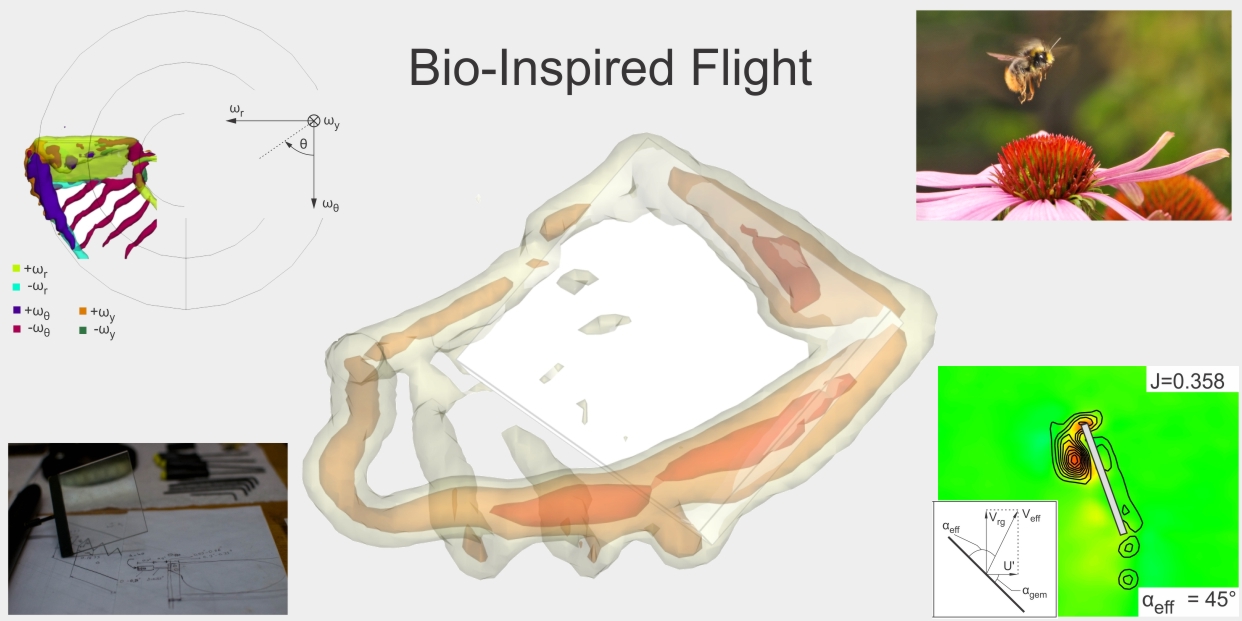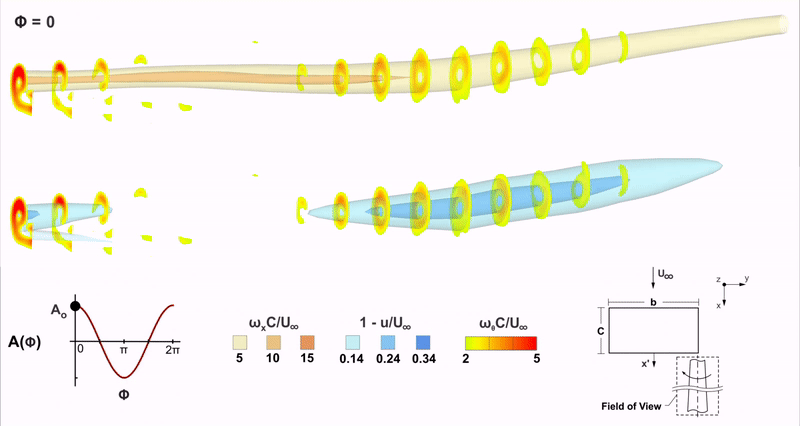Current Research
This section details each of the major research avenues currently being investigated by fluids lab members. A number of projects fall under each of these categories.
Turbulent shallow flows in estuaries, lakes, coastal areas of seas/oceans, and rivers can exhibit instabilities in the horizontal plane. Such instabilities have length scales that are much larger than the water depth. The turbulence between the free surface and the bottom surface (bed) has a characteristic length scale LT which is limited by the water depth hw. Classical examples of shallow separated flows involve shallow wakes, shallow jets, and shallow mixing layers. In all these types of flows, the onset and development of vortex systems in the shallow flow domain have a strong influence on transport, dispersion, exchange of pollutants and dissolved matter, growth of flora and fauna, aquatic environment of marine life, erosion, and transport of sediment. Thus, an understanding of the physics of the unsteady and quasi-steady flow patterns in these configurations has important consequences. A technique of high image density, particle image velocimetry (PIV) will be employed, in conjunction with unsteady pressure measurements to interpret the physics of flow in terms of pressure, velocity components, streamline topology, turbulence characteristics and vorticity, in conjunction with time- and phase-averaged patterns, with emphasis on the effects of instabilities.

The flow structure and loading on wings undergoing unsteady maneuvers has been of major interest in recent years. Research in the area of low Reynolds number, unsteady flight is directly relevant to the design of small unmanned air vehicles. A central concept involves biological inspired flapping wings, which are characterized by large amplitude rotation, pitching, and or plunging. Of specific interest herein are investigations related to the flow structure and loading due change; in wing kinematics, pure pitch-up, combined pitch-up-rotation and pure rotation maneuvers; variation of wing planform and other geometric parameters, aspect ratio, Rossby number, and wing planform variation; and hovering and forward flight maneuvers.

VORTEX IMPINGMENT ON AN AIRFOIL
Formation flight of birds and aircraft can result in substantial drag reduction. The underlying flow physics is, however, not well understood. This investigation involves the interaction between a leader and a follower wing, representative of aircraft in formation flight. The primary consideration will be impingement of the tip vortex of the leader wing onto the follower wing. This tip vortex will affect the flow structure around the follower wing. Furthermore, it is expected that changing the location where the tip vortex impinges on the follower wing will change the vortex-wing interaction. These interactions will be investigated using an adjustable experimental setup along with quantitative flow visualization in the form of particle image velocimetry.

STRUCTURE OF A PERTURBED TRAILING VORTEX
The unsteady structure of a trailing vortex may be interpreted as a three-dimensional gust. Such a vortex, or gust, potentially impinges upon a follower wing positioned on or near its trajectory, thereby giving rise to unsteady buffeting of its surface and/or disruption of its flight path. Stereoscopic particle image velocimetry and a three-dimensional construction technique are employed to characterize the structure of a trailing vortex from a wing subjected to displacement perturbations in the heaving mode with an amplitude an order of magnitude smaller than the diameter of the vortex and a wavelength two orders of magnitude greater than the diameter of the vortex. This perturbation leads to relatively large undulations of axial velocity deficit within, and circulation of, the vortex. Along the axis of the vortex, these fluctuations are associated with alternating regions of low and high values of swirl ratio. This results in an internal vortex structure comprised of successive regions of instability separated by stabilized regions. These mechanisms are therefore linked to the origin of the large gust-like fluctuations of axial velocity deficit and circulation.

